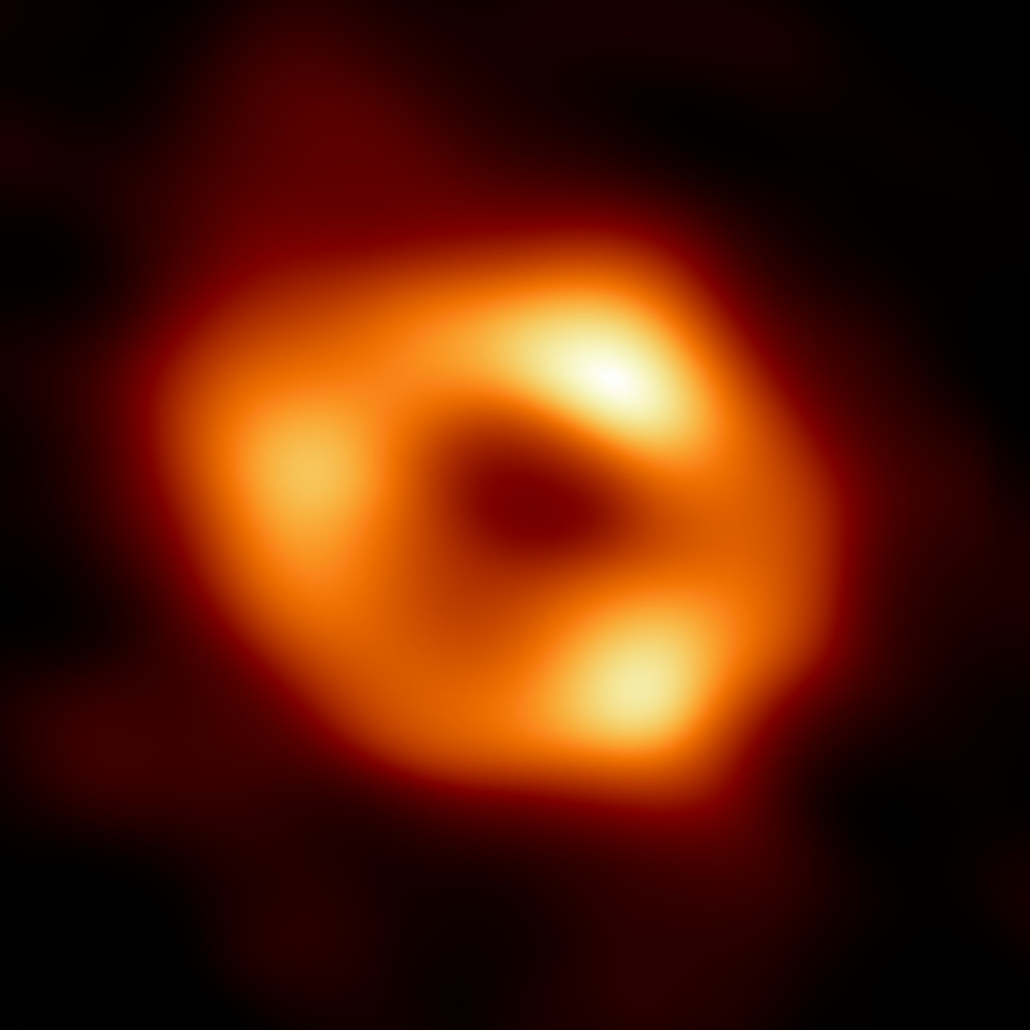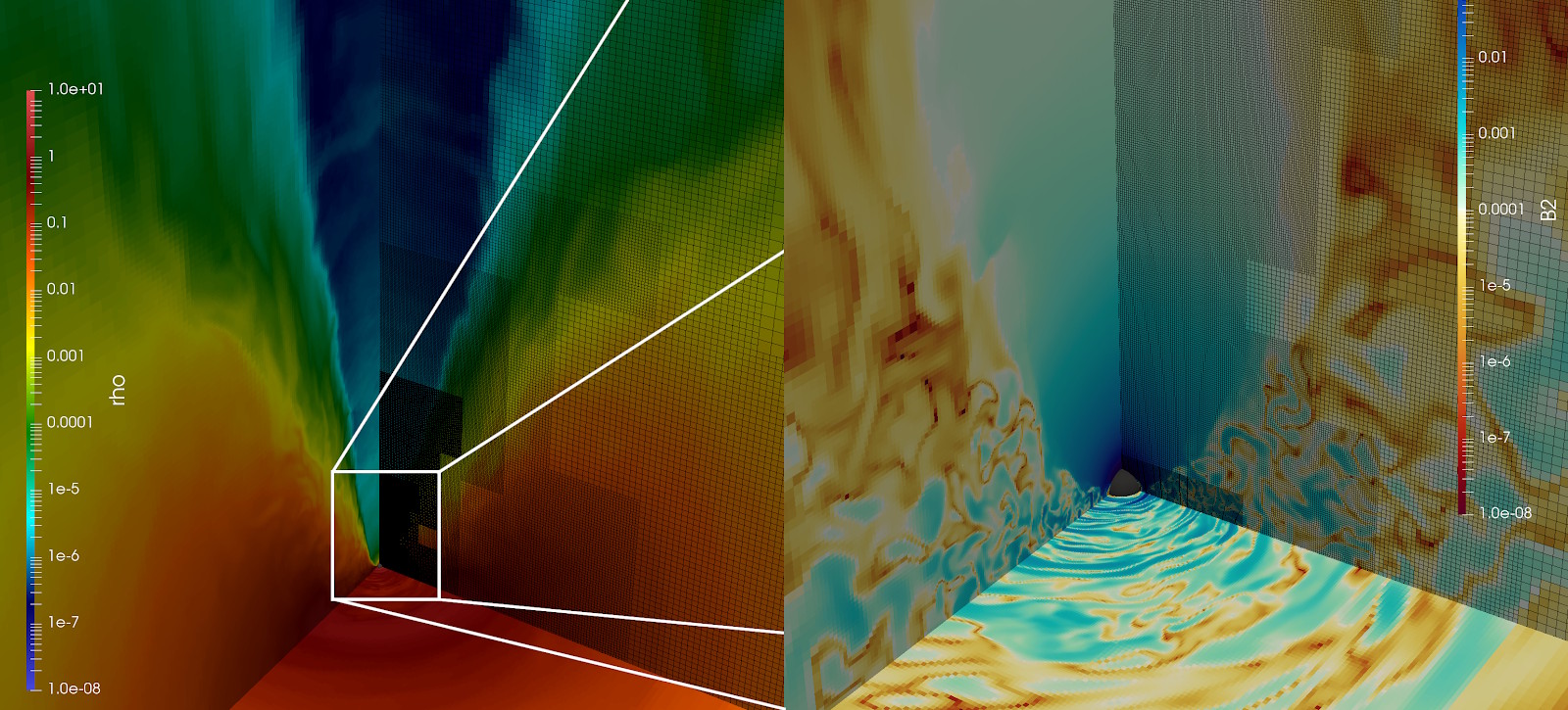One step closer to understand quasi-periodic oscillations in black hole accretion disks
 Group member Dr. Gibwa Musoke lead a study wherein we discovered a possible origin for quasi-periodic oscillations in black hole accretion disks. Once a thin accretion disk is strongly tilted with respect to the black hole spin axis, it can tear off into differentially precessing sub-disks. In the high-resolution GRMHD simulation analyzed by Gibwa, we found that not only does the tearing yield an explanation to the so-called low-frequency quasi periodic oscillations which are a consequence from the precession of the inner sub-disk, the inner disk also performs rapid "breathing oscillations" which can explain the Quasi-periodic signals observed from some X-ray binary disks at very high luminosity.
Group member Dr. Gibwa Musoke lead a study wherein we discovered a possible origin for quasi-periodic oscillations in black hole accretion disks. Once a thin accretion disk is strongly tilted with respect to the black hole spin axis, it can tear off into differentially precessing sub-disks. In the high-resolution GRMHD simulation analyzed by Gibwa, we found that not only does the tearing yield an explanation to the so-called low-frequency quasi periodic oscillations which are a consequence from the precession of the inner sub-disk, the inner disk also performs rapid "breathing oscillations" which can explain the Quasi-periodic signals observed from some X-ray binary disks at very high luminosity.
The paper has now been accepted for publication in MNRAS. See the full press release or just head over to the simulation movie made by co-Author Dr. Matthew Liska.
3rd Dec 2022 by Oliver
tags: science
The gentle giant

The picture of our very own black hole is finally out. Glad to have played a small role in its interpretation in the BlackHoleCam and EventHorizonTelescope collaborations. See here for all the 10(!!) papers. But if you are in a hurry check out paper V which shows the large role of computational physics in today's discovery.
12th May 2022 by Oliver
tags: science
Visitors and Events
On the arXiv
- Probing jet base emission of M87* with the 2021 Event Horizon Telescope observations 2nd Dec 2025; Saurabh, Hendrik Müller, Sebastiano D. von Fellenberg, Paul Tiede, Michael Janssen, Lindy Blackburn, Avery E. Broderick, Erandi Chavez, Boris Georgiev, Thomas P. Krichbaum et al.
- Fill the gaps: continuous in time interpolation of fluid dynamical simulations 11th Nov 2025; Jonas Pronk, Oliver Porth, Jordy Davelaar
- Comparison of magnetic diffusion and reconnection in ideal and resistive relativistic magnetohydrodynamics, ideal magnetodynamics, and resistive force-free electrodynamics 24th Sep 2025; Michael P. Grehan, Tanisha Ghosal, James R. Beattie, Bart Ripperda, Oliver Porth, Fabio Bacchini
- Resistive relativistic magnetohydrodynamics without Amperes Law 9th Sep 2025; Ruben Lier, Akash Jain, Jay Armas, Oliver Porth
- Effective resistivity in relativistic collisionless plasmoid-mediated reconnection 26th Aug 2025; Sebastiaan Selvi, Oliver Porth, Bart Ripperda, Fabio Bacchini, Lorenzo Sironi, Rony Keppens
Colloquia at API
CalendarRecent posts
- Science alert features paper on Boson stars 9th Sep 2020
- BHAC released 29th Nov 2019
- Alberto Sanchez Choza 4th Sep 2019
